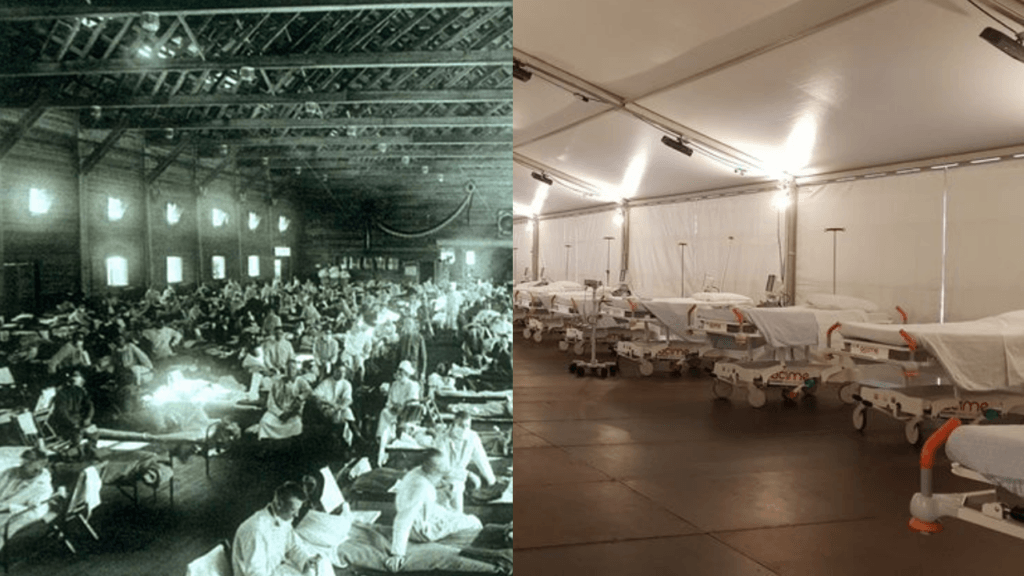A poster preserved by the State Archives shows that the measures taken on 4 November 1918 to contain the spread of the Spanish flu in Belgium were very similar to those being taken in the fight against the new coronavirus (Covid-19) today.
The Spanish flu was a very deadly influenza pandemic that lasted from January 1918 to December 1920, and infected about 500 million people, with an estimated death toll of between 20 million to 50 million people.
Despite its name, the pandemic most likely did not originate in Spain. The country, which was neutral during World War I, had no censorship, and its newspapers were among the only ones free to report on the virus' effects, creating the false impression that Spain was particularly hard hit.
Since Covid-19 was declared a global pandemic by the World Health Organisation (WHO), comparison between the current virus and the H1N1 influenza virus, which caused the Spanish flu, have arisen. Both diseases are caused by a virus that infects the lungs, with fever and coughing as the main symptoms.
Throwback to 1918, aanbevelingen van de overheid tegen de Spaanse Griep pic.twitter.com/AYsPTq4qCV
— Ronny Eggermont (@moseisley) March 12, 2020
Translation: "Throwback to 1918, government recommendations against the Spanish flu"
Not only are the manifestations of the Spanish flu and the coronavirus similar, but the measures taken to prevent their spread are also very alike, despite being about 100 years apart, the poster with "precautionary measures" by the Medical Committee of Bruges shows.
The poster tells the people to not ignore any symptom, no matter how small, and to stay in bed while waiting for the doctor to come. People who are sick, especially those with lung-related complaints were advised to be isolated in a different room, and should not receive visitors, not even if they were almost back to full health.
People who had, or thought they had, the Spanish flu had to eat well, and make sure their environment was regularly cleaned. All gatherings and meetings were to be avoided, and all schools had to be closed. After someone was cured, the rooms that they stayed in had to be thoroughly cleaned and disinfected.
Additionally, people were also asked to gargle bicarbonate water (water with baking soda) several times a day and to inhale water vapours with menthol several times a day.
Maïthé Chini
The Brussels Times

